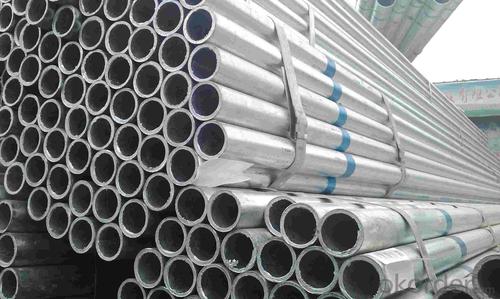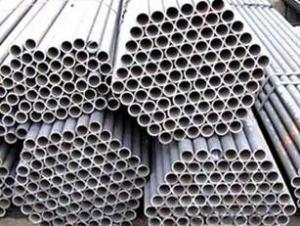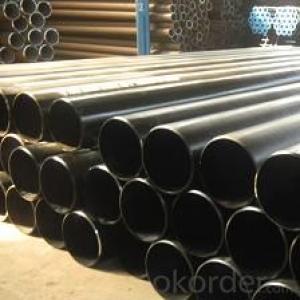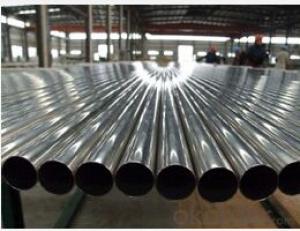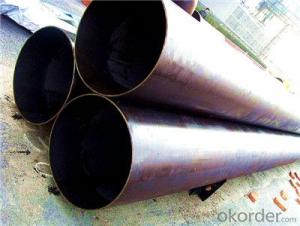seamless steel pipe seamless steel steel pipe seamless tube seamless pipes
- Loading Port:
- Tianjin
- Payment Terms:
- TT OR LC
- Min Order Qty:
- 80 m.t.
- Supply Capability:
- 4545 m.t./month
OKorder Service Pledge
OKorder Financial Service
You Might Also Like
Specification
1、Structure of Seamless steel pipe API ASTM GB SKT 5CT SEAMLESS TUBE SEAMLESS PIPES SEAMLESS CARBON PIPE ::
Seamless steel pipe is to be used for conveying gas, water, and petroleum foroil and natural gas industries. And used for structural steel pies purpose. As the manufacturing process does not include any welding, seamless pipes are perceived to be stronger and more reliable. Historically seamless pipe was regarded as withstanding pressure better than other types, and was often more easily available than welded pipe.
2、Main Features of Seamless steel pipe API ASTM GB SKT 5CT SEAMLESS TUBE SEAMLESS PIPES SEAMLESS CARBON PIPE :
• High manufacturing accuracy
• High strength
• Small inertia resistance
• Strong heat dissipation ability
• Good visual effect
• Reasonable price
3、Seamless steel pipe API ASTM GB SKT 5CT SEAMLESS TUBE SEAMLESS PIPES SEAMLESS CARBON PIPE : Specification:
Standard | GB, DIN, ASTM ASTM A106-2006, ASTM A53-2007 |
Grade | 10#-45#, 16Mn 10#, 20#, 45#, 16Mn |
Thickness | 8 - 33 mm |
Section Shape | Round |
Outer Diameter | 133 - 219 mm |
Place of Origin | Shandong, China (Mainland) |
Secondary Or Not | Non-secondary |
Application | Hydraulic Pipe |
Technique | Cold Drawn |
Certification | API |
Surface Treatment | factory state or painted black |
Special Pipe | API Pipe |
Alloy Or Not | Non-alloy |
Length | 5-12M |
Outer Diameter | 21.3-610mm |
Grade | 20#, 45#, Q345, API J55, API K55, API L80, API N80, API P110, A53B |
Standard | ASME, ASTM |
1) Material:20#(ASTM A 106/A53 GRB.API5LGRB,GB),45#,16Mn,10#.
2) Specification range:OD:21.3-610mm,WT:6-70mm,length:6-12m or according to the requirement of clients.
3) Excutive standards:GB,ASME API5L.ASTM A 106/A53,Despite of the above standards,we can also supply seamless steel pipe with standard of DIN,JIS,and so on,and also develop new products according to the requirements of our clients!
4) Surface:black lacquered,varnish coating or galvanized.
5) Ends:Beveled or square cut,plastic capped,painted.
6) Packing:bundles wrapped with strong steel strip,seaworthy packing.
4、Packaging & Delivery
Packaging Details: | seaworthy package,bundles wrapped with strong steel strip |
Delivery Detail: | 15-30days after received 30%TT |
5、FAQ of Seamless steel pipe API ASTM GB SKT 5CT SEAMLESS TUBE SEAMLESS PIPES SEAMLESS CARBON PIPE :
①How is the quality of your products?
Our products are manufactured strictly according to national and internaional standard, and we take a test
on every pipe before delivered out. If you want see our quality certifications and all kinds of testing report, please just ask us for it.
Guaranteed: If products’ quality don’t accord to discription as we give or the promise before you place order, we promise 100% refund.
②How about price?
Yes, we are factory and be able to give you lowest price below market one, and we have a policy that “ for saving time and absolutely honest business attitude, we quote as lowest as possible for any customer, and discount can be given according to quantity”,if you like bargain and factory price is not low enough as you think, just don’t waste your time.Please trust the quotation we would give you, it is professional one.
③Why should you chose us?
Chose happens because of quality, then price, We can give you both.Additionally, we can also offer professional products inquiry, products knowledge train(for agents), smooth goods delivery, exellent customer solution proposals.Our service formula: good quality+good price+good service=customer’s trust
SGS test is available, customer inspection before shipping is welcome, third party inspection is no problem.
6、 Seamless steel pipe API ASTM GB SKT 5CT SEAMLESS TUBE SEAMLESS PIPES SEAMLESS CARBON PIPE :
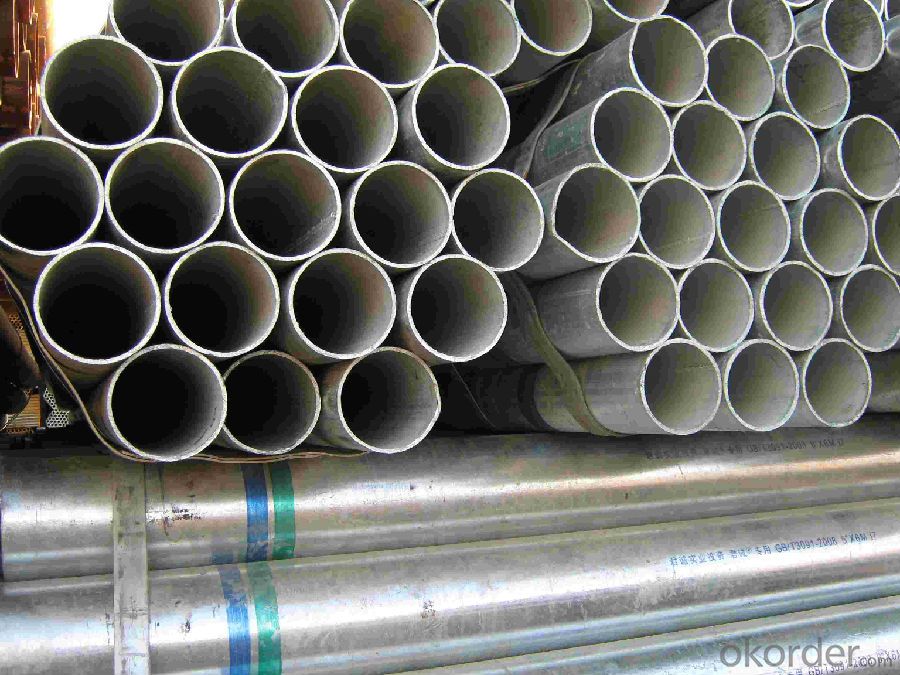
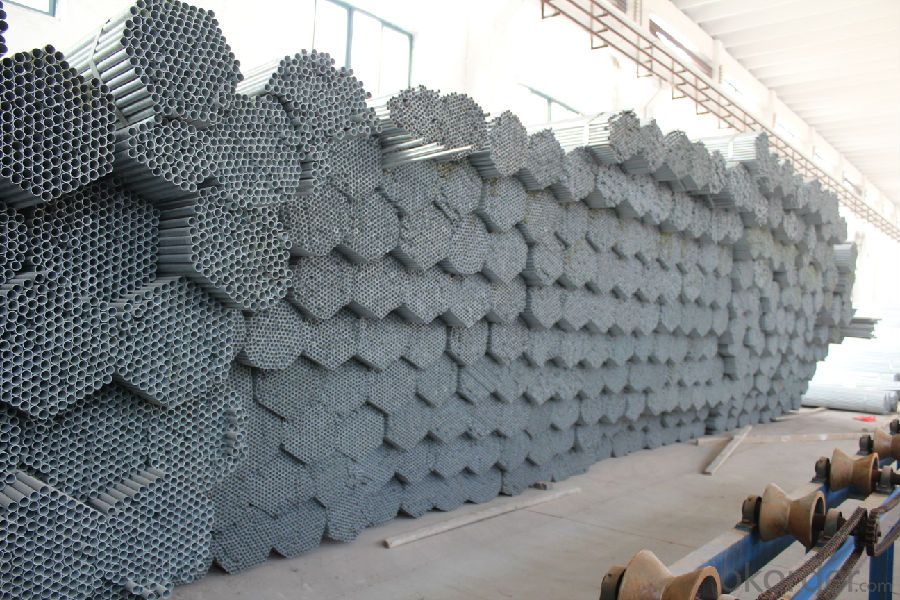
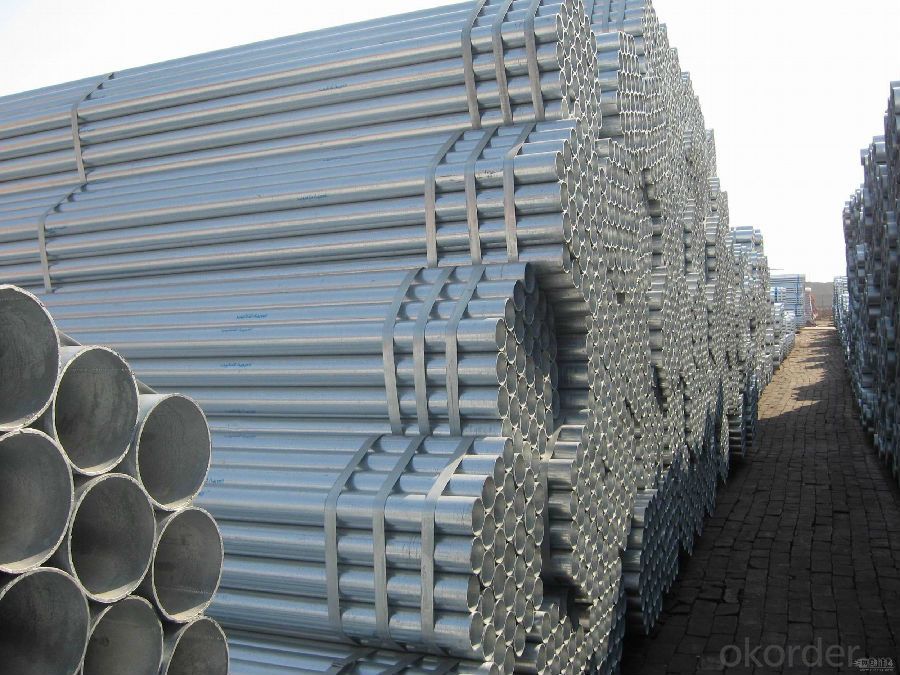
- Q: What are the safety regulations for working with steel pipes?
- The safety regulations for working with steel pipes may vary depending on the specific circumstances and location, but some common safety measures include wearing appropriate personal protective equipment (PPE) such as gloves, safety glasses, and steel-toed boots, ensuring proper handling techniques to prevent injuries, using proper lifting equipment to prevent strain or back injuries, implementing proper ventilation and respiratory protection when working in confined or poorly ventilated spaces, and following proper procedures for welding, cutting, or bending steel pipes to minimize the risk of fire or explosions. It is essential to consult and adhere to local safety regulations and guidelines to ensure a safe working environment when dealing with steel pipes.
- Q: How are steel pipes used in the food processing industry?
- Steel pipes are commonly used in the food processing industry for various applications such as transporting liquids, gases, and solids. They are utilized for moving ingredients, process water, and cleaning solutions within the production line. Additionally, steel pipes are used for steam and heating systems, allowing for efficient cooking and sterilization processes. They possess excellent corrosion resistance and durability, ensuring food safety and maintaining hygienic standards in the industry.
- Q: How do you determine the maximum allowable stress for a steel pipe?
- To determine the maximum allowable stress for a steel pipe, several factors need to be considered. These include the material properties of the steel, such as its yield strength, ultimate tensile strength, and elongation. Additionally, the pipe's dimensions, wall thickness, and the intended application or service conditions must be taken into account. By considering these factors, along with relevant design codes and standards, engineers can calculate the maximum stress that the steel pipe can safely withstand without experiencing failure.
- Q: Can steel pipes be used for sewage and wastewater systems?
- Yes, steel pipes can be used for sewage and wastewater systems. Steel pipes are highly durable, resistant to corrosion, and can withstand high pressure and temperature conditions, making them suitable for transporting sewage and wastewater efficiently and securely. Additionally, steel pipes have a long lifespan and can handle the abrasive nature of sewage and wastewater, making them a reliable choice for such systems.
- Q: Can steel pipes be used for desalination plants?
- Yes, steel pipes can be used for desalination plants. Steel pipes are commonly used in desalination plants to transport and distribute water, as they are durable, resistant to corrosion, and can handle high-pressure systems.
- Q: How are steel pipes protected against abrasive wear?
- Steel pipes are protected against abrasive wear through various methods such as applying protective coatings, using abrasion-resistant liners, and implementing proper maintenance and monitoring practices.
- Q: How are steel pipes protected against external damage?
- Steel pipes are protected against external damage through various methods such as anti-corrosion coatings, insulation materials, and cathodic protection systems. These measures help prevent corrosion, impact, and abrasion, ensuring the durability and longevity of the pipes.
- Q: Can steel pipes be used for underground gas pipelines?
- Yes, steel pipes can be used for underground gas pipelines. Steel pipes are commonly used in the construction of gas pipelines due to their strength, durability, and resistance to corrosion. They provide a reliable and safe means of transporting gas underground.
- Q: Can steel pipes be used for hydroelectric power plants?
- Hydroelectric power plants can indeed utilize steel pipes. These power plants frequently employ steel pipes for a variety of purposes. The primary application of steel pipes in these plants is within the penstock, which serves as the conduit for water movement from the reservoir to the turbine. Given the high pressure experienced within the penstock, steel pipes possess the requisite strength and durability to handle both the water flow and pressure. The use of steel pipes in hydroelectric power plants is favored due to their exceptional tensile strength, resistance to corrosion, and long-lasting nature. They can withstand the demanding conditions of high pressure and water flow, thereby ensuring an efficient transfer of water from the reservoir to the turbine. Moreover, the fabrication and installation of steel pipes are straightforward and convenient. These pipes can be tailored to fit the specific requirements of a given project, and they can be joined together using welding or bolts to achieve the desired length and shape. Furthermore, when compared to alternative materials like concrete or fiberglass, steel pipes offer cost-effective advantages. They provide a reliable and economically efficient solution for water conveyance within hydroelectric power plants, thereby contributing to the overall efficiency and effectiveness of the power generation process. In conclusion, steel pipes are commonly employed in hydroelectric power plants as they possess the necessary strength, durability, and cost-effectiveness required for the efficient transfer of water from the reservoir to the turbine. They are an ideal choice for this purpose and are widely regarded as a suitable material for hydroelectric power plants.
- Q: What's wrong with the 3PP anticorrosive steel tube?
- That is, polypropylene corrosion resistant coating of steel pipe, the biggest feature of this anti-corrosion coating is good heat resistance.
Send your message to us
seamless steel pipe seamless steel steel pipe seamless tube seamless pipes
- Loading Port:
- Tianjin
- Payment Terms:
- TT OR LC
- Min Order Qty:
- 80 m.t.
- Supply Capability:
- 4545 m.t./month
OKorder Service Pledge
OKorder Financial Service
Similar products
Hot products
Hot Searches
Related keywords


